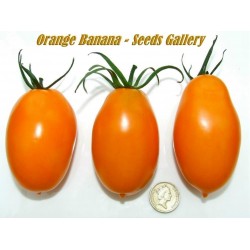Menu
-
MenuBack
- Home
-
Categories
-
-
Categories
-
Vegetable Seeds
-
Varieties by Country
- Varieties from Armenia
- Varieties from BiH
- Varieties from Croatia
- Varieties from France
- Varieties from Germany
- Varieties from Greece
- Varieties from Hungary
- Varieties from India
- Varieties from Italy
- Varieties from Japan
- Varieties from North Macedonia
- Varieties from Peru
- Varieties from Russia
- Varieties from Serbia
- Varieties from Slovenia
- Varieties from Spain
- Varieties from Thailand
- Varieties from Turkey
- Varieties from USA
- Tomato Seeds
- Corn Seeds
- Gourd family
- Bean family
- Cucumber Seeds
- Pepper Seeds
- Carrot family
- Onion family
- Lettuce Seeds
- Potato family
- Cabbage family
- Radish Seeds
- Beetroot family
- Watermelon Seeds
- Melon Seeds
- Cauliflower Seeds
- Sunflower family
-
Varieties by Country
- Fruit Seeds
- Chili - Habanero Seeds
- Medicinal Herb Seeds
- Climbing Plants Seeds
- Trees Bonsai Seeds
- Palm Seeds
- Ornamental Grasses Seeds
- Tobacco Seeds
-
Vegetable Seeds
-
-
-
-
- NEW PRODUCTS
- Create account
- Delivery - Payment
- FAQ
- Home
-
- Large Packets of Seeds
- Giant Plants Seeds
- Vegetable Seeds
- Varieties by Country
- Varieties from Armenia
- Varieties from BiH
- Varieties from Croatia
- Varieties from France
- Varieties from Germany
- Varieties from Greece
- Varieties from Hungary
- Varieties from India
- Varieties from Italy
- Varieties from Japan
- Varieties from North Macedonia
- Varieties from Peru
- Varieties from Russia
- Varieties from Serbia
- Varieties from Slovenia
- Varieties from Spain
- Varieties from Thailand
- Varieties from Turkey
- Varieties from USA
- Tomato Seeds
- Corn Seeds
- Gourd family
- Bean family
- Cucumber Seeds
- Pepper Seeds
- Carrot family
- Onion family
- Lettuce Seeds
- Potato family
- Cabbage family
- Radish Seeds
- Beetroot family
- Watermelon Seeds
- Melon Seeds
- Cauliflower Seeds
- Sunflower family
- Varieties by Country
- Fruit Seeds
- Chili - Habanero Seeds
- Medicinal Herb Seeds
- Climbing Plants Seeds
- Trees Bonsai Seeds
- Banana Seeds
- Palm Seeds
- Ornamental Grasses Seeds
- Tobacco Seeds
- Flower Seeds
- Cactus Seeds
- Water plants seeds
- Sowing Instructions
- Fruit and vegetable molds
- Mushroom Mycelium
- Plant Bulbs
- Bamboo seeds
- Ayurveda Plants
- F1 Hybrid Seeds
- Packaging and stuff
- Cold-resistant plants
- Plants Care
- Organic Spices
- Delivery - Payment
- No PayPal and Card payment X
Last Product Reviews
Out of the two seeds, one germinated and the other one was dead and floatin...
By
 Riikka H on 07/03/2024
Riikka H on 07/03/2024
Verified Purchase
There are 1772 products.
Showing 31-45 of 1772 item(s)

Plant resistant to cold and frost
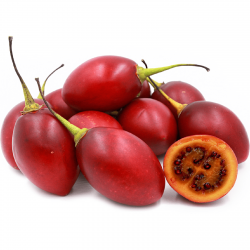
Tamarillo Seeds...
Price
€2.30
(SKU: V 113)
Seeds Gallery EU,
5/
5
<h2><strong><span style="color: #000000;">Tamarillo Seeds (Cyphomandra Betacea)</span></strong></h2>
<h2><strong><span style="color: #ff0000;">Price for Package of 5 or 10 seeds.</span></strong></h2>
<p>Cyphomandra betacea, also known as the tree tomato, or tamarillo, is a small evergreen and fast-growing tree, that originates from several regions of South America, including Peru and Chile. This small tree has large heart-shaped leaves, fragrant flowers that are borne into clusters, red edible fruits.</p>
<p>The tomato tree is frost-hardy to 26°F to 28°F (-2°C to -3°C), and will best be grown in summer.</p>
<p>Newly planted tamarillos should be pruned to a height of 3 to 4 ft. to encourage branching. Yearly pruning thereafter is advisable to eliminate branches that have already fruited and to induce ample new shoots close to the main branches, since fruit is produced on new growth. Pruning also aids in harvesting, and if timed properly can extend the total fruiting period.</p>
<p>Hardiness Zone US 8-11 Aus 2-5 </p>
<div>
<h2><strong>WIKIPEDIA:</strong></h2>
<div><span>The </span><b>tamarillo</b><span> is a small tree or </span>shrub<span> in the </span>flowering plant<span> family </span>Solanaceae<span> (the nightshade family). It is best known as the species that bears the </span><b>tamarillo</b><span>, an egg-shaped edible </span>fruit<span>.</span><sup id="cite_ref-tamarillocom_2-0" class="reference">[2]</sup><span> It is also known as the </span><b>tree tomato</b><span>,</span><sup id="cite_ref-3" class="reference">[3]</sup><span> </span><b>tomate andino</b><span>, </span><b>tomate serrano</b><span>, </span><b>tomate de yuca</b><span>, </span><b>sachatomate</b><span>, </span><b>berenjena</b><span>, </span><b>tamamoro</b><span>, and </span><b>tomate de árbol</b><span> in South America.</span></div>
<div></div>
<div>
<h3><span class="mw-headline" id="Plant_origin_and_regions_of_cultivation">Plant origin and regions of cultivation</span></h3>
<p>The tamarillo is native to the Andes of Ecuador, Colombia, Peru, Chile, and Bolivia. Today it is still cultivated in gardens and small orchards for local production,<sup id="cite_ref-SmallFruitsReview_4-0" class="reference">[4]</sup> and it is one of the most popular fruits in these regions.<sup id="cite_ref-economicBotany_5-0" class="reference">[5]</sup> Other regions of cultivation are the subtropical areas throughout the world, such as Rwanda, South Africa, Darjeeling and Sikkim in India, Nepal, Hong Kong, China, the United States, Australia, Bhutan and New Zealand.<sup id="cite_ref-SmallFruitsReview_4-1" class="reference">[4]</sup></p>
<p>The first internationally marketed crop of tamarillos in Australia was produced around 1996, although permaculture and exotic fruit enthusiasts had increasingly grown the fruit around the country from the mid-1970s on.</p>
<p>In New Zealand, about 2,000 tons are produced on 200 hectares of land and exported to the United States, Japan<sup id="cite_ref-LostCrops_6-0" class="reference">[6]</sup> and Europe. For the export, the existing marketing channels developed for the kiwifruit are used.<sup id="cite_ref-SmallFruitsReview_4-2" class="reference">[4]</sup></p>
<p>The tamarillo is also successfully grown at higher elevations of Malaysia and the Philippines, and in Puerto Rico.<sup id="cite_ref-economicBotany_5-1" class="reference">[5]</sup> In the hot tropical lowlands, it develops only small fruits and fruit setting is seldom.</p>
<p>Prior to 1967, the tamarillo was known as the "tree tomato" in New Zealand, but a new name was chosen by the New Zealand Tree Tomato Promotions Council in order to distinguish it from the ordinary garden tomatoand increase its exotic appeal.</p>
</div>
<span style="color: #ff0000;"><span style="color: #ff0000;"><strong></strong></span></span>
<h3><span class="mw-headline" id="Plant">Plant</span></h3>
<span style="color: #ff0000;"><span style="color: #ff0000;"><strong></strong></span></span>
<div class="thumb tright">
<div class="thumbinner"><img alt="" src="https://upload.wikimedia.org/wikipedia/commons/thumb/3/31/Cyphomandra_betacea1.jpg/220px-Cyphomandra_betacea1.jpg" width="220" height="165" class="thumbimage">
<div class="thumbcaption">
<div class="magnify"></div>
Flower cluster</div>
</div>
</div>
<span style="color: #ff0000;"><span style="color: #ff0000;"><strong></strong></span></span>
<p>The plant is a fast-growing tree that grows up to 5 meters. Peak production is reached after 4 years,<sup id="cite_ref-LostCrops_6-1" class="reference">[6]</sup> and the life expectancy is about 12 years.<sup id="cite_ref-SmallFruitsReview_4-3" class="reference">[4]</sup> The tree usually forms a single upright trunk with lateral branches. The flowers and fruits hang from the lateral branches. The leaves are large, simple and perennial, and have a strong pungent smell.<sup id="cite_ref-LostCrops_6-2" class="reference">[6]</sup> The flowers are pink-white, and form clusters of 10 to 50 flowers. They produce 1 to 6 fruits per cluster. Plants can set fruit without cross-pollination, but the flowers are fragrant and attract insects. Cross-pollination seems to improve fruit set.<sup id="cite_ref-LostCrops_6-3" class="reference">[6]</sup> The roots are shallow and not very pronounced, therefore the plant is not tolerant of drought stress and can be damaged by strong winds. Tamarillos will hybridize with many other solanaceae, though the hybrid fruits will be sterile, and unpalatable in some instances.</p>
<span style="color: #ff0000;"><span style="color: #ff0000;"><strong></strong></span></span>
<h3><span class="mw-headline" id="Fruit">Fruit</span></h3>
<span style="color: #ff0000;"><span style="color: #ff0000;"><strong></strong></span></span>
<div class="thumb tright">
<div class="thumbinner"><img alt="" src="https://upload.wikimedia.org/wikipedia/commons/thumb/9/9a/Solanum_betaceum_unripe_fruits.jpg/220px-Solanum_betaceum_unripe_fruits.jpg" width="220" height="146" class="thumbimage">
<div class="thumbcaption">
<div class="magnify"></div>
Unripe fruits</div>
</div>
</div>
<span style="color: #ff0000;"><span style="color: #ff0000;"><strong></strong></span></span>
<div class="thumb tright">
<div class="thumbinner"><img alt="" src="https://upload.wikimedia.org/wikipedia/commons/thumb/0/00/Tamarillos%28janek2005%29.jpg/220px-Tamarillos%28janek2005%29.jpg" width="220" height="182" class="thumbimage">
<div class="thumbcaption">
<div class="magnify"></div>
Ripe fruits</div>
</div>
</div>
<span style="color: #ff0000;"><span style="color: #ff0000;"><strong></strong></span></span>
<p>The fruits are egg-shaped and about 4-10 centimeters long. Their color varies from yellow and orange to red and almost purple. Sometimes they have dark, longitudinal stripes. Red fruits are more acetous, yellow and orange fruits are sweeter. The flesh has a firm texture and contains more and larger seeds than a common tomato.<sup id="cite_ref-SmallFruitsReview_4-4" class="reference">[4]</sup> The fruits are very high in vitamins and iron and low in calories (only about 40 calories per fruit).</p>
<span style="color: #ff0000;"><span style="color: #ff0000;"><strong></strong></span></span>
<h3><span class="mw-headline" id="Soil_and_climate_requirements">Soil and climate requirements</span></h3>
<span style="color: #ff0000;"><span style="color: #ff0000;"><strong></strong></span></span>
<p>The tamarillo prefers subtropical climate, with rainfall between 600 and 4000 millimeters and annual temperatures between 15 and 20 °C.<sup id="cite_ref-SmallFruitsReview_4-6" class="reference">[4]</sup> It is intolerant to frost (below -2 °C) and drought stress. It is assumed that fruit set is affected by night temperatures. Areas where citrus are cultivated provide good conditions for tamarillos as well, such as in the Mediterranean climate. Tamarillo plants grow best in light, deep, fertile soils, although they are not very demanding. However, soils must be permeable since the plants are not tolerant to water-logging.<sup id="cite_ref-SmallFruitsReview_4-7" class="reference">[4]</sup> They grow naturally on soils with a pH of 5 to 8.5.</p>
<span style="color: #ff0000;"><span style="color: #ff0000;"><strong></strong></span></span>
<h3><span class="mw-headline" id="Growth">Growth</span></h3>
<span style="color: #ff0000;"><span style="color: #ff0000;"><strong></strong></span></span>
<p>Propagation is possible by both using seeds or cuttings.<sup id="cite_ref-SmallFruitsReview_4-8" class="reference">[4]</sup><sup id="cite_ref-7" class="reference">[7]</sup> Seedlings first develop a straight, about 1.5 to 1.8 meters tall trunk, before they branch out. Propagation by seeds is easy and ideal in protected environments. However, in orchards with different cultivars, cross-pollination will occur and characteristics of the cultivars get mixed up. Seedlings should be kept in the nursery until they reach a height of 1 to 1.5 meters, as they are very frost-sensitive.</p>
<span style="color: #ff0000;"><span style="color: #ff0000;"><strong></strong></span></span>
<p>Plants grown from cuttings branch out earlier and result in more shrub-like plants that are more suitable for exposed sites. Cuttings should be made from basal and aerial shoots, and should be free of pathogenic viruses. Plants grown from cuttings should be kept in the nursery until they reach a height of 0.5 to 1 meter.</p>
<span style="color: #ff0000;"><span style="color: #ff0000;"><strong></strong></span></span>
<p>The tree grows very quickly and is able to bear fruit after 1.5 to 2 years.<sup id="cite_ref-economicBotany_5-2" class="reference">[5]</sup> The plant is daylength-insensitive. The fruits do not mature simultaneously, unless the tree has been pruned. A single tree can produce more than 20 kg of fruit per year; an orchard yields in 15 to 17 tons per hectare.<sup id="cite_ref-LostCrops_6-5" class="reference">[6]</sup> One single mature tree in good soil will bear more fruit than a typical family can eat in about 3 months.</p>
<span style="color: #ff0000;"><span style="color: #ff0000;"><strong></strong></span></span>
<p>Tamarillos are suitable for growing as indoor container plants, though their swift growth, their light, water and humidity requirements and their large leaves can pose a challenge to those with limited space.</p>
<span style="color: #ff0000;"><span style="color: #ff0000;"><strong></strong></span></span>
<h3><span class="mw-headline" id="Plant_management">Plant management</span></h3>
<span style="color: #ff0000;"><span style="color: #ff0000;"><strong></strong></span></span>
<div class="thumb tright">
<div class="thumbinner"><img alt="" src="https://upload.wikimedia.org/wikipedia/commons/thumb/0/0a/Cyphomandra_betacea2.jpg/220px-Cyphomandra_betacea2.jpg" width="220" height="293" class="thumbimage">
<div class="thumbcaption">
<div class="magnify"></div>
Tamarillo tree</div>
</div>
</div>
<span style="color: #ff0000;"><span style="color: #ff0000;"><strong></strong></span></span>
<p>The tamarillo trees are adaptable and very easy to grow. However, some plant management strategies can help to stabilize and improve plant performance.</p>
<span style="color: #ff0000;"><span style="color: #ff0000;"><strong></strong></span></span>
<h4><span class="mw-headline" id="Planting">Planting</span></h4>
<span style="color: #ff0000;"><span style="color: #ff0000;"><strong></strong></span></span>
<p>Planting distances depend on the growing system. In New Zealand, with mechanized production, single row planting distances of 1 to 1.5 meters between plants and 4.5 to 5 meters between rows are recommended. In traditional growing regions such as the Andean region, plantations are much more dense, with 1.2 to 1.5 meters between plants. Dense planting can be a strategy to protect plants against wind.<sup id="cite_ref-SmallFruitsReview_4-9" class="reference">[4]</sup> On poorly drained soils, plants should be planted on ridges.</p>
<span style="color: #ff0000;"><span style="color: #ff0000;"><strong></strong></span></span>
<h4><span class="mw-headline" id="Pruning">Pruning</span></h4>
<span style="color: #ff0000;"><span style="color: #ff0000;"><strong></strong></span></span>
<p>Pruning can help to control fruit size, plant size, harvest date and to simplify the harvesting of fruits.<sup id="cite_ref-SmallFruitsReview_4-10" class="reference">[4]</sup> Cutting the tip of young plants leads to the desired branch height. Once the tree shape has been formed, pruning is reduced to the removal of old or dead wood and previously fruited branches, since branches that have already carried fruits will produce smaller fruits with lower quality the next time. Light pruning leads to medium-sized, heavy pruning to large sized fruits. Basal shoots should be removed. When plants are grown in greenhouses, pruning prevents excessive vegetative growth.</p>
<span style="color: #ff0000;"><span style="color: #ff0000;"><strong></strong></span></span>
<p>When the tree is about 1 to 1.5 metres in height, it is advisable to cut the roots on one side and lean the tree to the other (in the direction of the midday sun at about 30 to 45 degrees). This allows fruiting branches to grow all along the trunk rather than just at the top.</p>
<span style="color: #ff0000;"><span style="color: #ff0000;"><strong></strong></span></span>
<div class="thumb tright">
<div class="thumbinner"><img alt="" src="https://upload.wikimedia.org/wikipedia/commons/thumb/e/e3/Tamarillo_seedlings%2C_6_months_old.jpg/220px-Tamarillo_seedlings%2C_6_months_old.jpg" width="220" height="215" class="thumbimage">
<div class="thumbcaption">
<div class="magnify"></div>
Tamarillo seedlings, 6 months old</div>
</div>
</div>
<span style="color: #ff0000;"><span style="color: #ff0000;"><strong></strong></span></span>
<h4><span class="mw-headline" id="Mulching">Mulching</span></h4>
<span style="color: #ff0000;"><span style="color: #ff0000;"><strong></strong></span></span>
<p>Since the plants are sensitive to drought stress, mulching can help to preserve moisture in the soil.<sup id="cite_ref-LostCrops_6-6" class="reference">[6]</sup> It can also be a strategy to suppress weeds, as other soil management techniques, such as plowing, are not possible due to the shallow and sensitive root system.</p>
<span style="color: #ff0000;"><span style="color: #ff0000;"><strong></strong></span></span>
<h4><span class="mw-headline" id="Shelter">Shelter</span></h4>
<span style="color: #ff0000;"><span style="color: #ff0000;"><strong></strong></span></span>
<p>The plants have to be protected from wind. Their shallow root system does not provide enough stability, and the lateral branches are fragile and break easily when carrying fruits.<sup id="cite_ref-SmallFruitsReview_4-11" class="reference">[4]</sup></p>
<span style="color: #ff0000;"><span style="color: #ff0000;"><strong></strong></span></span>
<h4><span class="mw-headline" id="Irrigation_and_fertilization">Irrigation and fertilization</span></h4>
<span style="color: #ff0000;"><span style="color: #ff0000;"><strong></strong></span></span>
<p>To maximize and stabilize production, water and nutrient inputs should be provided when needed. The plants need continuous supply of water due to their shallow root system. Drought stress results in a decrease of plant growth, fruit size and productivity.<sup id="cite_ref-SmallFruitsReview_4-12" class="reference">[4]</sup> Recommended fertilizer rates per hectare are 170 kg of Nitrogen, 45 kg of Phosphorus and 130 to 190 kg of Potassium for intensive New Zealand production systems. Phosphorus and Potassium are applied in the beginning of the season, Nitrogen applications are distributed throughout the year.<sup id="cite_ref-SmallFruitsReview_4-13" class="reference">[4]</sup></p>
<span style="color: #ff0000;"><span style="color: #ff0000;"><strong></strong></span></span>
<h4><span class="mw-headline" id="Pest_management">Pest management</span></h4>
<span style="color: #ff0000;"><span style="color: #ff0000;"><strong></strong></span></span>
<p>The tamarillo tree is, compared to similar crops such as tomatoes, quite resistant to pests in general. Still, to reduce risk in intensive production systems, some pests have to be controlled to avoid major crop damage. To control pests, the same control methods as for other solanaceae can be used.</p>
<span style="color: #ff0000;"><span style="color: #ff0000;"><strong></strong></span></span>
<h3><span class="mw-headline" id="Harvest">Harvest</span></h3>
<span style="color: #ff0000;"><span style="color: #ff0000;"><strong></strong></span></span>
<p>Ripening of fruits is not simultaneous. Several harvests are necessary.<sup id="cite_ref-8" class="reference">[8]</sup> In climates with little annual variation, tamarillo trees can flower and set fruit throughout the year. In climates with pronounced seasons (such as New Zealand), fruits ripen in autumn. Premature harvest and ethylene induced ripening in controlled-atmosphere chambers is possible with minimal loss of fruit quality.<sup id="cite_ref-Ripening_9-0" class="reference">[9]</sup> The fragile lateral branches can break easily when loaded with fruits, so premature harvest helps to reduce this risk and allows storage of fruits up to 20 days at room temperature. A cold-water dipping process, developed by the New Zealand Department of Scientific and Industrial Research also allows further storage of 6–10 weeks.<sup id="cite_ref-SmallFruitsReview_4-14" class="reference">[4]</sup></p>
<span style="color: #ff0000;"><span style="color: #ff0000;"><strong></strong></span></span>
<h2><span class="mw-headline" id="Usage">Usage</span></h2>
<span style="color: #ff0000;"><span style="color: #ff0000;"><strong></strong></span></span>
<h3><span class="mw-headline" id="Culinary_use">Culinary use</span></h3>
<span style="color: #ff0000;"><span style="color: #ff0000;"><strong></strong></span></span>
<p>The fruit is eaten by scooping the flesh from a halved fruit. When lightly sugared and cooled, the flesh is used for a breakfast dish. Some people in New Zealand cut the fruit in half, scoop out the pulpy flesh and spread it on toast at breakfast. Yellow-fruited cultivars have a sweeter flavor, occasionally compared to mango or apricot. The red-fruited variety, which is much more widely cultivated, is more tart, and the savory aftertaste is far more pronounced. In the Northern Hemisphere, tamarillos are most frequently available from July until November, and fruits early in the season tend to be sweeter and less astringent.</p>
<span style="color: #ff0000;"><span style="color: #ff0000;"><strong></strong></span></span>
<p>They can be made into compotes, or added to stews (e.g. Boeuf Bourguignon), hollandaise, chutneys and curries. Desserts using this fruit include bavarois and, combined with apples, a strudel.</p>
<span style="color: #ff0000;"><span style="color: #ff0000;"><strong></strong></span></span>
<p>Tamarillos can be added as a secondary fermentation flavouring to Kombucha Tea for a tart and tangy taste. The fruit should be mashed and added at a ratio of 3 Tamarillos to 1 Litre of Kombucha, however great care should be taken to not allow too much carbon dioxide gas to build up in sealed bottles during secondary fermentation. The sugar content of fresh Tamarillos added to Kombucha can generate a rapid carbon dioxide production in secondary fermentation within just 48–72 hours.</p>
<span style="color: #ff0000;"><span style="color: #ff0000;"><strong></strong></span></span>
<p>In Colombia, Ecuador, Panama and parts of Indonesia (including Sumatra and Sulawesi), fresh tamarillos are frequently blended together with water and sugar to make a juice. It is also available as a commercially pasteurized purée.</p>
<span style="color: #ff0000;"><span style="color: #ff0000;"><strong></strong></span></span>
<p>In Nepal, a version of the South American fruit is decently popular. It is typically consumed as a chutney or a pickle during the autumn and winter months. It is known as <i>Tammatar</i> and <i>Ram Bheda</i>. Similar to Nepal, the Indian regions of Ooty, Darjeeling and Sikkim also consume Tamarillo.</p>
<span style="color: #ff0000;"><span style="color: #ff0000;"><strong></strong></span></span>
<p>In Ecuador, the tamarillo, known as <i>tomate de árbol</i>, is blended with chili peppers to make a hot sauce commonly consumed with local dishes of the Andean region. The sauce is simply referred to as <i>aji</i> and is present at every meal in Ecuador.</p>
<span style="color: #ff0000;"><span style="color: #ff0000;"><strong></strong></span></span>
<p>The flesh of the tamarillo is tangy and variably sweet, with a bold and complex flavor, and may be compared to kiwifruit, tomato, guava, or passion fruit. The skin and the flesh near it have a bitter taste and are not usually eaten raw</p>
<span style="color: #ff0000;"><span style="color: #ff0000;"><strong></strong></span></span>
<p>The tamarillo has been described as having a taste similar to that of a passion fruit and a piquant tomato combined.<sup class="noprint Inline-Template Template-Fact">[<i><span title="This claim needs references to reliable sources. (January 2009)">citation needed</span></i>]</sup></p>
<span style="color: #ff0000;"><span style="color: #ff0000;"><strong></strong></span></span>
<p>The red and purple types of fruits are preferred in import countries of Europe: Even though they taste more acidic, their color is favoured by consumers.<sup id="cite_ref-SmallFruitsReview_4-15" class="reference">[4]</sup></p>
<span style="color: #ff0000;"><span style="color: #ff0000;"><strong></strong></span></span>
<h3><span class="mw-headline" id="Industrial_use">Industrial use</span></h3>
<span style="color: #ff0000;"><span style="color: #ff0000;"><strong></strong></span></span>
<p>The fruits are high in pectin and therefore have good properties for preserves. However, they oxidize and lose color when not treated. Yellow fruit types are better suited to industrial use.</p>
<span style="color: #ff0000;"><span style="color: #ff0000;"><strong></strong></span></span>
<h2><span class="mw-headline" id="Prospects">Prospects</span></h2>
<span style="color: #ff0000;"><span style="color: #ff0000;"><strong></strong></span></span>
<p>Research and breeding should improve plantation management, fruit quality and postharvest treatment.<sup id="cite_ref-LostCrops_6-7" class="reference">[6]</sup> A better understanding of plant physiology, nutritional requirements of plants and fruit set mechanisms will help to improve growing systems. Breeding goals are to break seed dormancy, to improve sweetness of fruits and to increase yield. For industrial uses, little "stones" of sodium and calcium that occasionally appear in the fruit skin form a problem. Those stones have to be eliminated by breeding.</p>
<span style="color: #ff0000;"><strong><br></strong></span></div>
<div></div><script src="//cdn.public.n1ed.com/G3OMDFLT/widgets.js"></script>
V 113 (10 S)


Variety from India
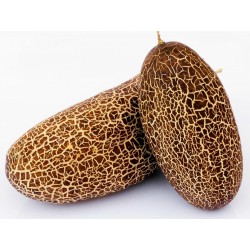
Sikkim Cucumber Seeds
Price
€2.30
(SKU: PK 18)
Seeds Gallery EU,
5/
5
<h2><strong>''Sikkim'' Cucumber Seeds Organically Grown</strong></h2>
<h2><span style="color: #ff0000;"><strong>Price for Package of 5 or 10 seeds</strong><strong><br></strong></span></h2>
<p>The historic cucumber. Fat, large fruit can reach several pounds in size. The ripe fruit is a unique rusty red color and is good eaten cooked or raw. In Asia, cucumbers are often stir-fried and are quite tasty. This variety is grown in the Himalayas of Sikkim and Nepal. Sir Joseph Hooker first discovered it in the eastern Himalayas in 1848. Here is part of what he wrote about it: “So abundant were the fruits, that for days together I saw gnawed fruits lying by the natives’ paths by the thousands, and every man, woman, and the child seemed engaged throughout the day in devouring them.” </p>
<p><strong>Extremely early, 45-50 days.</strong></p>
<p><strong>FRESH SEEDS.</strong></p>
<p>It does well in containers 5 gallons and up (the key to growing in containers is simple, regular watering and feeding). Northern zones direct sow mid-June. It can be started earlier indoors, be especially careful with the roots when transplanting. Stake string up or trellis will also grow well without support. Pick fruit regularly to increase production. One of the most unusual treats is emerging as possibly the best tasting cucumber of all in many opinions. Good eating even when they look over-ripe. Gets rave reviews on taste and productivity.</p><script src="//cdn.public.n1ed.com/G3OMDFLT/widgets.js"></script>
PK 18 (10 S)


Variety from India
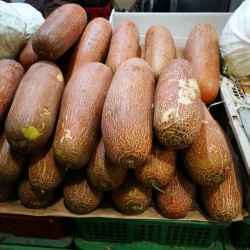
Poona Kheera Cucumber Seeds
Price
€2.35
(SKU: PK 17)
Seeds Gallery EU,
5/
5
<h2><strong>Poona Kheera Cucumber Seeds Organically Grown</strong></h2>
<h2><span style="color:#ff0000;"><strong>Price for Package of 5 or 10 seeds.</strong></span></h2>
<div>Organic Poona Kheera Cucumber - A favorite in our trials! A specialty variety from India with great flavor, quality and field resistance to disease compared to similar varieties. Cucumbers are light yellow-green when young and begin turning russet-brown at full maturity. Traditionally sold at light-green stage, but we find the flavor is best when harvested just as browning begins; then skin has a sugary sweet flavor and flesh is juicy and crisp. Heavy producer. Climbs easily on trellis to 5-6’.(Cucumis sativus)</div>
<div>Days to maturity:50 days</div>
<div>FRESH SEEDS.</div>
<div> </div>
<div> Does well in containers 5 gallon and up (the key to growing in containers is simple, regular watering and feeding). Northern zones direct sow mid June. Can be started earlier indoors, be especially careful with the roots when transplanting. Stake string up or trellis, will also grow well without support. Pick fruit regularly to increase production. One of the most unusual treats, is emerging as possibly the best tasting cucumber of all in many opinions. Good eating even when they look over-ripe. Gets rave reviews on taste and productivity.</div>
PK 17 (10 S)

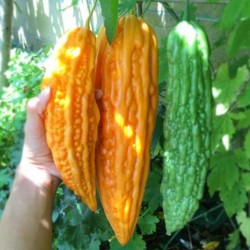
Bitter Melon Seeds...
Price
€2.55
(SKU: V 7)
Seeds Gallery EU,
5/
5
<h2><strong>Seeds Bitter Melon, Bitter Gourd, Balsam Pear (Momordica Charantia)</strong></h2>
<h2><span style="color: #ff0000;"><strong>Price per pack of 5, 10, 50, 100 seeds.</strong></span></h2>
<p>If the Balsam Pear did not exist a pharmaceutical company would invent it. In fact, there have been some ten studies published this past year about it, the latest as of this writing in February 2008 in the Journal of Food Biochemistry about its potential in diabetes treatment.</p>
<p>A very common, bitter vegetable in Asian cuisine, the Balsam Pear, Momordica charantia, is a natural drug store for diabetics and others. It’s not a pear at all but a fruiting gourd and vine that smells like an old, well-used gym shoe. Don’t say you weren’t warned.</p>
<div>The warty gourd is edible when green (and cooked) but turns toxic when orange ripe. It then splits characteristically into three parts, revealing red arils (fleshy seed covers). The ripe seeds inside the arils and orange flesh of the gourd are toxic and can make one violently lose fluids from both ends, and induce abortions. The red arils around the seeds, however, are edible. And notice this: The arils are 96% lycopene, which gives them their color. Just remember to spit out the seed from each aril.</div>
<div>M. charantia is found Connecticut south to Florida, west to Texas, also Puerto Rico and the Hawaiian Islands. Incidentally, the bitter melon has twice the potassium of bananas and is also rich in vitamin A and C.</div>
<div> </div>
<div>The Latin genus name, Momordica, (mo-MOR-dee-ka) means “to bite,” and refers to the jagged edges of the leaves, which appear as if they have been bitten. Charantia (char-AN-tee-ah) the species’ name, comes from Greek meaning beautiful flower. It’s native to tropical regions of the world though no one knows where it came from originally. Gray’s four-inch thick Manual of Botany, started in 1850 and revised in 1950, makes no mention of M. charantia in the United States but it is currently a serious crop weed in Florida and to 21 other crops around the world, bananas to soybeans. It’s a late comer to Florida or Gray was in the dark about it. In the Amazon, and as far away as India, it is used very much by local populations for food and medicine. Apparently a dynamic chemical factory, the M. charantia is being tested for treatment against cancer — leukemia in particular — AIDS, as an analgesic, and to moderate insulin resistance. It is often called the vegetable insulin. It does not increase insulin secretion but “speeds up carbohydrate use of the cells by affecting membrane lipids.” Seems like the smelly gym shoe hanging on the fence has a great future. But, it is not for everyone: Don’t eat the vegetable if you’re hypoglycemic or pregnant. In diabetics it can lower blood sugar too effectively. It also reduces fertility in men and women. And, it contains vicine. That can cause favism in people who have a variant glucose-6-phosphate dehydrogenase. (I presume if you don’t know what that is you don’t have it. Favism is a severe reaction to fava beans and or their pollen. Occurs most often in Mediterranean men.)</div>
<div>Cultivated versions of the M. charantia, also called Bitter Gourd or Wild Balsam Apple, are found in most Asian markets, and they, too, smell like an old gym shoe. The odor, thankfully, almost all goes away when cooked and the bitterness moderates, but does not go away. If you are not yet brave enough to pick your own, you can buy some or grow it yourself. There are many varieties and numerous recipes are on the Internet. The M. charantia is indeed bitter. Some cut up the vegetable and soak it in water, or salted water and or blanch it to reduce the bitterness.</div>
<div>While I have never seen an Oriental family picking M. charantia off local fences here in Florida, I have seen many Hispanic families doing so. Dr. Julia Morton, a plant professor in south Florida, says besides the green fruit, the young leaves when cooked and drained are also edible and nutritious, with iron, phosphorous, calcium and vitamin C. I have never managed to get past the locker room bouquet to toss ‘em in a pot, and the fruit is just too bitter for me to enjoy. The ripe fruit pulp has been used as a soap substitute, which should give you some idea of the flavor. In India and Africa the cooked leaves are canned like spinach. The fragrant flowers can be used as seasoning when cooking.</div>
<div> </div>
<div>Incidentally, if you have a glut of green Bitter Gourds, you can slice them, partially boil them with salted water, then dry them, sun or otherwise. They will last for several months. You can then fry them and use as you like. Also, drinking the fresh bitter juice is recommended by some naturopaths. That ain’t going to be easy, it’s really bitter…. much easier to tell someone to do it than do it yourself.</div>
<div> </div>
<div>REMEMBER: No part of the Momordica charantia is ever to be eaten raw, except for the red arils (and remember to spit the seeds out.) No part, other than the arils, is ever to be eaten when ripe, which is when it is turning from green to yellow to orange. Do not eat the yellow or orange fruit raw or cooked. It is toxic. Also, the green fruit is suspected in the poisoning of dogs and pigs.</div>
<div> </div>
<div>Relatives: Momordica balsamina, which has longer spines on the fruit and can ripen to red, grows only in St. Lucie County in Florida and only a smattering of places in the southern U.S. M. balsamina fruit can be pickled or after soaking used as a cooked vegetable. Young shoots and tendrils are boiled as a green. The seeds are eaten. Momordica cochinchinensis produces a huge round fruit that is red when ripe. Young fruit boiled, not as bitter as M. charantia. Momordica dioica, small and roundish, is more esteemed than the rest. It is not bitter but sweet. Fruits, shoots, leaves and roots are boiled for food. There are also at least seven commercial cultivars of the Momordica gourds</div>
<div>IDENTIFICATION: Momordica charantia: A slender, climbing annual vine to 18 feet with long-stalked leaves and yellow flowers where the leaf meets the stem. Young fruit emerald green turning to orange when ripe. At maturity, fruit splits into three irregular parts that curl backwards showing many reddish-brown or white seeds encased in scarlet arils.</div>
<div> </div>
<div>TIME OF YEAR: Fruit, summer and fall in warm climates, fall in northern climes.</div>
<div> </div>
<div>ENVIRONMENT: Love to climb, found in hammocks, disturbed sites, turf and ornamental landscapes, and citrus groves . It seems to be the most common vine on chain link fences in Florida.</div>
<div> </div>
<div>METHOD OF PREPARATION: None of it ripe except the arils. Boiled green fruit (including seeds) leaves and shoots, boiled twice. Or, cut open and remove seeds and fiber and parboil. Ripe parts toxic are too bitter to eat. (An adult can swallow hole two ripe seed and not have much distress.) Young leaves and shoots are boiled and eaten as a potherb. Flowers used as seasoning.</div>
<div> </div>
<div>HERB BLURB</div>
<div>Herbalists say the charantia has long been used to treat diabetes and a host of other ailments from arthritis to jaundice.
<p> </p>
<table cellspacing="0" cellpadding="0" border="1">
<tbody>
<tr>
<td colspan="2" width="100%" valign="top">
<h3><span style="color: #008000;"><strong>Sowing Instructions</strong></span></h3>
</td>
</tr>
<tr>
<td valign="top" nowrap="nowrap">
<p><span style="color: #008000;"><strong>Propagation:</strong></span></p>
</td>
<td valign="top">
<p><span style="color: #008000;">Seeds</span></p>
</td>
</tr>
<tr>
<td valign="top" nowrap="nowrap">
<p><span style="color: #008000;"><strong>Pretreat:</strong></span></p>
</td>
<td valign="top">
<p><span style="color: #008000;">preswollen 2 days in water</span></p>
</td>
</tr>
<tr>
<td valign="top" nowrap="nowrap">
<p><span style="color: #008000;"><strong>Stratification:</strong></span></p>
</td>
<td valign="top">
<p><span style="color: #008000;">0</span></p>
</td>
</tr>
<tr>
<td valign="top" nowrap="nowrap">
<p><span style="color: #008000;"><strong>Sowing Time:</strong></span></p>
</td>
<td valign="top">
<p><span style="color: #008000;">all year round</span></p>
</td>
</tr>
<tr>
<td valign="top" nowrap="nowrap">
<p><span style="color: #008000;"><strong>Sowing Depth:</strong></span></p>
</td>
<td valign="top">
<p><span style="color: #008000;">0,5-1 cm</span></p>
</td>
</tr>
<tr>
<td valign="top" nowrap="nowrap">
<p><span style="color: #008000;"><strong>Sowing Mix:</strong></span></p>
</td>
<td valign="top">
<p><span style="color: #008000;">Coir or sowing mix + sand or perlite</span></p>
</td>
</tr>
<tr>
<td valign="top" nowrap="nowrap">
<p><span style="color: #008000;"><strong>Germination temperature:</strong></span></p>
</td>
<td valign="top">
<p><span style="color: #008000;">20 - 25° C</span></p>
</td>
</tr>
<tr>
<td valign="top" nowrap="nowrap">
<p><span style="color: #008000;"><strong>Location:</strong></span></p>
</td>
<td valign="top">
<p><span style="color: #008000;">bright + keep constantly moist not wet</span></p>
</td>
</tr>
<tr>
<td valign="top" nowrap="nowrap">
<p><span style="color: #008000;"><strong>Germination Time:</strong></span></p>
</td>
<td valign="top">
<p><span style="color: #008000;">1-4 weeks</span></p>
</td>
</tr>
<tr>
<td valign="top" nowrap="nowrap">
<p><span style="color: #008000;"><strong>Watering:</strong></span></p>
</td>
<td valign="top">
<p><span style="color: #008000;">Water regularly during the growing season</span></p>
</td>
</tr>
<tr>
<td valign="top" nowrap="nowrap">
<p><span style="color: #008000;"><strong> </strong></span></p>
</td>
<td valign="top">
<p><br><span style="color: #008000;">Seeds Gallery 05.11.2012.</span></p>
<div><span style="color: #008000;"> </span></div>
</td>
</tr>
</tbody>
</table>
</div>
V 7 (10 S)

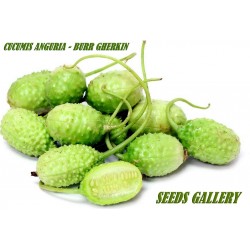
Maroon Cucumber, West...
Price
€1.85
(SKU: PK 16)
Seeds Gallery EU,
5/
5
<h2><strong>Maroon Cucumber, West Indian Gherkin Cucumber Seeds</strong></h2><h2><span style="color: #ff0000;" data-mce-style="color: #ff0000;"><strong>Price for Package of 10 seeds.</strong></span></h2><p>(Cucumis anguria) (aka Burr Gherkin) A different species than the common cucumber, traditionally used for pickling as the flesh is thin, tough, and seedy. Introduced from Jamaica in 1793. Cataloged by James J. H. Gregory as early as 1875. He describes it as “A very small, elegant, peculiar sort . . . prolific to an extraordinary degree.” Very drought tolerant. 60-65 days.</p><p>The plant produces big vines with distinct leaves, closer to watermelon than cucumbers. Productive amounts of oval spiny fruits 2-3" long and 1½" in diameter. Distinct flavor, used for making small pickles or relish. Very drought tolerant. </p>
PK 16 (10 S)


Giant plant (with giant fruits)

Variety from Armenia

Armenian Yard Long Cucumber...
Price
€3.95
(SKU: PK 25)
Seeds Gallery EU,
5/
5
<h2 class="n1ed--selected"><strong>Armenian Yard Long Cucumber Seeds</strong></h2>
<h2><span style="color: #ff0000;"><strong>Price for Package of 35 (1g) seeds.</strong></span></h2>
<p>65 days. Cucumis sativus. Plant produces good yields of 3 foot long slim light green cucumbers. Best when harvested when 12" long. This is the longest cucumber on the market. It is an excellent slicer and perfect for salads and gourmet dishes. It has a crisp mild flavor and is easy to digest. Impress your neighbors and grow a 3 foot long cucumber in your home garden! United States Department of Agriculture, NSL 65913.</p>
<p><em><strong>Disease Resistant: Mosaic Virus.<br /></strong></em></p>
<p><em><strong> </strong></em></p>
<p><em><strong>WIKIPEDIA:</strong></em></p>
<p>The <b>Armenian cucumber</b>, <b><i>Cucumis melo</i> var. <i>flexuosus</i></b>, is a type of long, slender fruit that tastes like a cucumber and looks somewhat like a cucumber inside. It is actually a variety of muskmelon (<i>C. melo</i>), a species closely related to the cucumber (<i>C. sativus</i>). It is also known as the <b>yard-long cucumber</b>, <b>snake cucumber</b>, <b>snake melon</b>, and <i>uri</i> in Japan. It should not be confused with the snake gourds (<i>Trichosanthes</i> spp.). The skin is very thin, light green, and bumpless. It has no bitterness and the fruit is almost always used without peeling. It is also sometimes called a "gutah".</p>
<div>
<ul class="gallery mw-gallery-traditional">
<li class="gallerybox">
<div>
<div class="thumb">
<div><img alt="Several Armenian cucumbers in a fabric-covered box." src="https://upload.wikimedia.org/wikipedia/commons/thumb/2/28/Armenian_cucumbers.jpeg/90px-Armenian_cucumbers.jpeg" width="90" height="120" /></div>
</div>
<div class="gallerytext">
<p>Armenian cucumbers for sale</p>
</div>
</div>
</li>
</ul>
<div id="toc" class="toc"><span class="toctext"></span></div>
<h2><span class="mw-headline" id="Description">Description</span></h2>
<p>The Armenian cucumber grows approximately 30 to 36 inches (76 to 91 cm) long. It grows equally well on the ground or on a<span> </span>trellis. Armenian cucumber plants prefer to grow in full sun for most of the day. The fruit is most flavorful when it is 12 to 15 inches (30 to 38 cm) long. Pickled Armenian cucumber is sold in Middle Eastern markets as "Pickled Wild Cucumber".</p>
<h2><span class="mw-headline" id="History">History</span></h2>
<p>Fredric Hasselquist, in his travels in<span> </span>Asia Minor,<span> </span>Egypt,<span> </span>Cyprus,<span> </span>and<span> </span>Palestine<span> </span>in the 18th century, came across the "Egyptian or hairy cucumber,<span> </span><i>Cucumis chate</i>", which is today included in the Armenian variety. It is said by Hasselquist to be the “queen of cucumbers, refreshing, sweet, solid, and wholesome.” He also states “they still form a great part of the food of the lower-class people in Egypt serving them for meat, drink, and physic.” George E. Post, in<span> </span><i>Hastings' Dictionary of the Bible</i>, states, “It is longer and more slender than the<span> </span>common cucumber, being often more than a foot long, and sometimes less than an inch thick, and pointed at both ends.”<br /><br /></p>
<div style="padding: 56.25% 0 0 0; position: relative;">
<div class="n1ed_cover" data-cke-hidden-sel="true" contenteditable="false" style="z-index: 200; left: 0px; top: 0px; width: 1371px; height: 770px;"></div>
<iframe style="position: absolute; top: 0; left: 0; width: 100%; height: 100%;" src="https://player.vimeo.com/video/567380557" frameborder="0" allow="autoplay; fullscreen; picture-in-picture" allowfullscreen="allowfullscreen" data-mce-fragment="1"></iframe></div>
<p>
<script src="https://player.vimeo.com/api/player.js"></script>
</p>
</div>
<script src="//cdn.public.n1ed.com/G3OMDFLT/widgets.js"></script>
PK 25 (1g)


Variety from United States of America
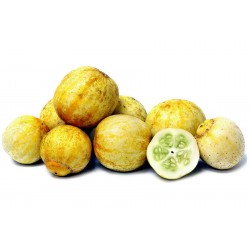
Lemon Cucumber Seeds
Price
€2.25
(SKU: PK 15)
Seeds Gallery EU,
5/
5
<h2><strong>Lemon Cucumber Seeds</strong></h2>
<h2><span style="color: #ff0000;"><strong>Price for Package of 10 seeds.</strong><strong><br></strong></span></h2>
<p>An unusual Heirloom variety producing a profusion of apple-shaped fruits, with lemon-colored skin and lime green flesh, which is very mild, sweet, and never bitter. Best harvested at lemon size. Although outstanding for salads or pickling, chances are (just like us) you will end up eating most of these delectable nuggets out-of-hand like an apple. This is a vigorous plant that should yield a tremendous crop. 70 days.</p>
<p><strong>Origin:</strong></p>
<p>The cucumber species originates from India. The origin of lemon cucumbers isn't certain, it was introduced to America sometime between 1894 and 1905 but there are Middle-Eastern documents that mention this variety from the 16th century, making its likely origin from around this time in either the Middle-East or India. </p>
<p><strong>Culinary Us<span>es:</span></strong></p>
<p><span>Lemon cucumbers are sweet and crisp with no bitterness making them very versatile. Burpless and thin-skinned. Great for pickling, juicing, adding fresh to salads, or eating as a healthy and delicious snack. Don't be fooled, the variety name 'Lemon' refers to the color of the skin of this cucumber, not its taste, it is not lemony in flavor nor particularly sour.</span></p>
<p><strong>Cultivation:</strong></p>
<p>Cucumber 'Lemon' should be trellised for ease of picking and to save space. Easy to grow, very prolific with fruits maturing quickly. Fruits need less heat to ripen than most varieties making them a good variety for cooler climates. Also a good variety for growing in pots and containers. Avoid watering leaves where possible to reduce disease. <span>Lemon cucumbers are more resistant to drought than most cucumbers and are resistant to rusts. </span><span>Grows best in soil with a pH of around 6.5.</span></p><script src="//cdn.public.n1ed.com/G3OMDFLT/widgets.js"></script>
PK 15 (10 S)

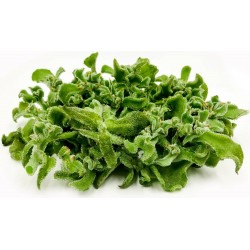
Ice Plant Seeds...
Price
€1.50
(SKU: VE 131)
Seeds Gallery EU,
5/
5
<h2 class=""><strong>Mesembryanthemum crystallinum , Common Ice Plant Seeds</strong></h2>
<h2><span style="color: #ff0000;"><strong>Price for Package of 10 or 25 Seeds.</strong></span></h2>
<div>Mesembryanthemum crystallinum, known as the Ice Plant, is a lovely succulent that is native to South Africa. Grows as a dense groundcover to 1 metre wide and around 10cm high.</div>
<div>It is covered with large, bladder-like cells that store water, glistening in the sun resulting in a frosty appearance. As the plant age, the leaves redden. The edible green leaves are boiled and taken as green, or use it fresh as a salty garnish. Produces white flowers. It usually grow in sandy to rocky coastal areas. In order to survive in coastal areas, the plant has a special mechanism to accumulate and then release the salt into the surrounding soil. </div><script src="//cdn.public.n1ed.com/G3OMDFLT/widgets.js"></script>
VE 131 (10 S)


Variety from Peru
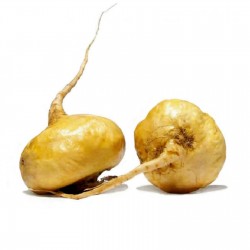
Maca Seeds (Lepidium meyenii)
Price
€2.20
(SKU: VE 166)
Seeds Gallery EU,
5/
5
<!DOCTYPE html>
<html>
<head>
<meta http-equiv="Content-Type" content="text/html; charset=UTF-8" />
</head>
<body>
<h2><strong>Maca Organic Seeds (Lepidium meyenii) Aphrodisiac</strong></h2>
<h2><span style="color: #ff0000;"><strong>Price for Package of 20 or 40 seeds.</strong></span></h2>
<p>Maca (Lepidium meyenii) is a hearty root vegetable grown in the high Andes of Bolivia and Peru. Cultivated since pre-Incan times, it is prized by indigenous peoples for its nutritional and medicinal properties along with its power as an aphrodisiac, energy enhancer, and hormonal balancer.</p>
<p><strong>Nutritional Profile:</strong></p>
<p>A dietary staple for the indigenous peoples of the Andes, Maca (L. meyenii) is rich in nutrients, containing 31 different minerals, amino acids, antioxidants, alkaloids, and sterols. Maca is an "adaptogen", a substance that brings the body to a heightened state of resistance to disease. Studies suggest that it has a balancing effect on the hypothalamus, which in turn balances other endocrine glands in the body.</p>
<p><strong>Clinical Research:</strong></p>
<p>Maca (L. meyenii) root has flourished for thousands of years in the high Andes at altitudes up to 14,000 feet, in extreme climatic conditions where few other plants can survive a single season. Scientists suggest that Maca's remarkable endurance may help to explain its energizing and adaptogenic properties. Peruvian and Chinese researchers have conducted clinical tests on both humans and animals, verifying Maca's capacity to strengthen the libido and increase sperm count.</p>
<div>
<table cellspacing="0" cellpadding="0" border="1">
<tbody>
<tr>
<td colspan="2" width="100%" valign="top">
<h3><span style="color: #008000;"><strong>Sowing Instructions</strong></span></h3>
</td>
</tr>
<tr>
<td valign="top" nowrap="nowrap">
<p><span style="color: #008000;"><strong>Propagation:</strong></span></p>
</td>
<td valign="top">
<p><span style="color: #008000;">Seeds</span></p>
</td>
</tr>
<tr>
<td valign="top" nowrap="nowrap">
<p><span style="color: #008000;"><strong>Pretreat:</strong></span></p>
</td>
<td valign="top">
<p><span style="color: #008000;">0</span></p>
</td>
</tr>
<tr>
<td valign="top" nowrap="nowrap">
<p><span style="color: #008000;"><strong>Stratification:</strong></span></p>
</td>
<td valign="top">
<p><span style="color: #008000;">0</span></p>
</td>
</tr>
<tr>
<td valign="top" nowrap="nowrap">
<p><span style="color: #008000;"><strong>Sowing Time:</strong></span></p>
</td>
<td valign="top">
<p><span style="color: #008000;">all year round </span></p>
</td>
</tr>
<tr>
<td valign="top" nowrap="nowrap">
<p><span style="color: #008000;"><strong>Sowing Depth:</strong></span></p>
</td>
<td valign="top">
<p><span style="color: #008000;">Just sprinkle on the surface of the substrate + gently press</span></p>
</td>
</tr>
<tr>
<td valign="top" nowrap="nowrap">
<p><span style="color: #008000;"><strong>Sowing Mix:</strong></span></p>
</td>
<td valign="top">
<p><span style="color: #008000;">Coir or sowing mix + sand or perlite</span></p>
</td>
</tr>
<tr>
<td valign="top" nowrap="nowrap">
<p><span style="color: #008000;"><strong>Germination temperature:</strong></span></p>
</td>
<td valign="top">
<p><span style="color: #008000;">20 ° C</span></p>
</td>
</tr>
<tr>
<td valign="top" nowrap="nowrap">
<p><span style="color: #008000;"><strong>Location:</strong></span></p>
</td>
<td valign="top">
<p><span style="color: #008000;">bright + keep constantly moist not wet</span></p>
</td>
</tr>
<tr>
<td valign="top" nowrap="nowrap">
<p><span style="color: #008000;"><strong>Germination Time:</strong></span></p>
</td>
<td valign="top">
<p><span style="color: #008000;">1-6 weeks</span></p>
</td>
</tr>
<tr>
<td valign="top" nowrap="nowrap">
<p><span style="color: #008000;"><strong>Watering:</strong></span></p>
</td>
<td valign="top">
<p><span style="color: #008000;">Water regularly during the growing season</span></p>
</td>
</tr>
<tr>
<td valign="top" nowrap="nowrap">
<p><span style="color: #008000;"><strong> </strong></span></p>
</td>
<td valign="top">
<p><br /><span style="color: #008000;"><em>Copyright © 2012 Seeds Gallery - Saatgut Galerie - Galerija semena. </em><em>All Rights Reserved.</em><em></em></span></p>
</td>
</tr>
</tbody>
</table>
</div>
</body>
</html>
VE 166 (20 S)

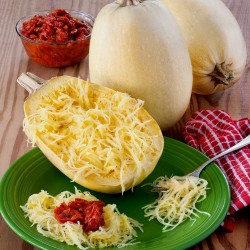
Spaghetti Winter Squash Seeds
Price
€2.35
(SKU: VG 2)
Seeds Gallery EU,
5/
5
<h2><strong>Spaghetti Winter Squash Seeds</strong></h2>
<h2><span style="color: #ff0000;" class=""><strong>Price for Package of 7-15 (1g) seeds.</strong></span></h2>
<p>Vegetable Description: Spaghetti with fewer calories! This unique variety, Vegetable Spaghetti, produces fruit that, when cooked, yields delicious spaghetti-like strands of creamy-light yellow flesh. Bake for 40 to 50 minutes, then cut open and scrape out strands. Matures in 85-100 days. Ready to harvest when skin color changes from cream to buff. Best when 8 to 10 inches long. Can store up to 6 months! Average water needs. Attractive to bees, butterflies, and/or birds.</p>
<div>Vegetable Botanical Name: Cucurbita pepo</div><script src="//cdn.public.n1ed.com/G3OMDFLT/widgets.js"></script>
VG 2 (1g)


Variety from Spain
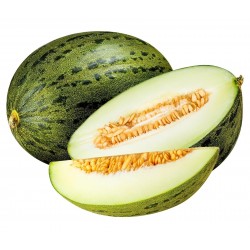
Piel de Sapo Melon Seeds...
Price
€1.85
(SKU: V 76)
Seeds Gallery EU,
5/
5
<meta http-equiv="Content-Type" content="text/html; charset=UTF-8" />
<h2><strong>Piel de Sapo Melon Seeds (Cucumis melo)</strong></h2>
<h2><span style="color: #ff0000;"><strong>Price for Package of 20 seeds.</strong></span></h2>
<p>Piel de Sapo. Commonly known and marketed as Santa Claus melon, family Cucurbitaceae (Cucumis melo, Inodorus group) is a type of melon widely available in the Northern Hemisphere. It has a blotched green peel after which it is named (Piel De Sapo translates as "toad skin"). A closely related melon with the same shape but with yellow peel is known as "Amarillo" or Canary melon. Piel de Sapo originated in Spain where it is widely grown - about 30,000 hectares are cultivated annually. La Mancha is the main region in Spain producing this type with 12,000 hectares. They are grown outdoors with plantings starting in May and running until June. Production starts in mid-July and ends in September. Another important growing area is Murcia that has specialized in growing early crops. There, they plant mainly in Mid March and harvest from mid-June to mid-July.</p>
<p>It has white sweet-tasting flesh and flourishes in slightly acidic or neutral soil. Large quantities are imported into Europe. It is grown in Brazil and Central America to supply produce to Spain during autumn, winter, and spring. The most popular cultivar in the last ten years in the main producing region (La Mancha) has been a hybrid named Sancho bred by the seedhouse Syngenta. Many open-pollinated cultivars were grown in Spain until recently but hybrids have replaced them almost entirely as they offer to the growers higher yields and better resistance to disease. Old cultivars have been preserved in germplasm collections.</p>
V 76 (20 S)


Giant plant (with giant fruits)
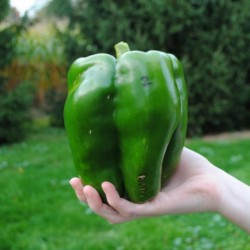
Red Giant Monster Sweet...
Price
€2.70
(SKU: PP 58)
Seeds Gallery EU,
5/
5
<h2><strong>Red Giant Monster Sweet Pepper Seeds</strong></h2>
<h2><span style="color: #ff0000;"><strong>Price for Package of 10 seeds.</strong></span></h2>
<p>Red Monster Giant is a sweet pepper that has very large and fleshy fruits. The color of the fruit goes from green to dark red (also available in yellow and orange color). The fruit Reach a weight of 300-850gr. Plants are strong and very disease resistant. It is suitable for the outdoors and greenhouse cultivation.</p>
<p>Excellent variety for fresh consumption, barbeque, and stuffing. It can be frozen very well.</p>
PP 58 R (10 S)

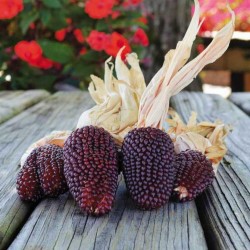
RED STRAWBERRY CORN -...
Price
€1.75
(SKU: VE 132)
Seeds Gallery EU,
5/
5
<h2 class=""><strong>Pop Corn Strawberry Seeds Organically Grown</strong></h2>
<h2><span style="color: #ff0000;"><strong>Price for Package of 10 seed.</strong></span></h2>
<p class="">Strawberry popcorn seeds are fun and easy to grow in your garden. Strawberry popcorn produces from 2 to 4 miniature 7 cm (2-3") cobs that resemble strawberries in shape and color. Strawberry popcorn plants grow only 120-150 cm (4 feet) tall and produce mahogany-colored cobs with blonde husks. <br /><br />This unique-looking cob makes great autumn decorations and tastes great popped. Our kids get a kick out of popping strawberry popcorn.</p>
<p><strong>Sowing Instructions</strong></p>
<p><strong>Site & Soil</strong></p>
<p>Sow popcorn seeds 3 inches apart after all chance of frost has passed. Keep moist until sprouts are established then thin to 6 - 9 inches. Popcorn seeds should be planted in rows to ensure pollination. A group of at least 3 rows 2-3 feet apart is most effective. Seeds need fertile well-drained soil to thrive and produce the best quality ears. Plenty of nitrogen early on definitely helps popcorn reach it's potential. Once tassels appear a good quality fruiting or bloom fertilizer works great. Once established water when soil becomes dry.</p>
<p><strong>Growing</strong></p>
<p>Hoe shallowly when weeding to avoid root disturbance and in exposed areas earth up the stems to 13cm (5in) to increase stability. Although corn can tolerate high temperatures and drought, this can lead to poor pollination (empty cobs!) Water regularly, especially if you notice the leaves curling and when the cobs begin to swell. Apply nitrogen fertilizer once the plants are about 20cm (8”) tall and again when they start producing tassels. </p>
<p>Corn seed does not germinate below 10°C (50°F) Start off indoors in Spring or sow directly outside from May. It must have a long warm season to perform well. This means around 70 to 110 frost-free days after planting at around 16C - 35C (61°F - 95°F).</p>
<script src="//cdn.public.n1ed.com/G3OMDFLT/widgets.js"></script>
VE 132 (10 S)

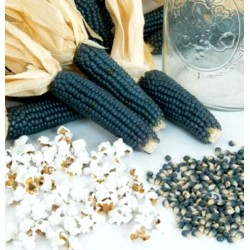
Mini Blue Popcorn Seeds
Price
€1.80
(SKU: VE 95 (1g))
Seeds Gallery EU,
5/
5
<h2><strong>Mini Blue Popcorn Seeds</strong></h2>
<h2><span style="color: #ff0000;"><strong>Price for Package of 15 (1g) seeds.</strong></span></h2>
<div>
<p class="">This unusual corn originally from Southern Mexico produces dark blue kernels. Grown mainly as an ornamental, its young 'baby' corns are edible but become tougher when older, growing to a length of around 5 - 10 cm. It was originally dried, ground, and used as corn flour, but makes great popping corn. <br>Plants can grow up to 1 meter or more in height. Ready to harvest in around 100 days. <br>Corns enjoy well-drained fertile soil and plenty of water!</p>
</div><script src="//cdn.public.n1ed.com/G3OMDFLT/widgets.js"></script>
VE 95 (1g)






